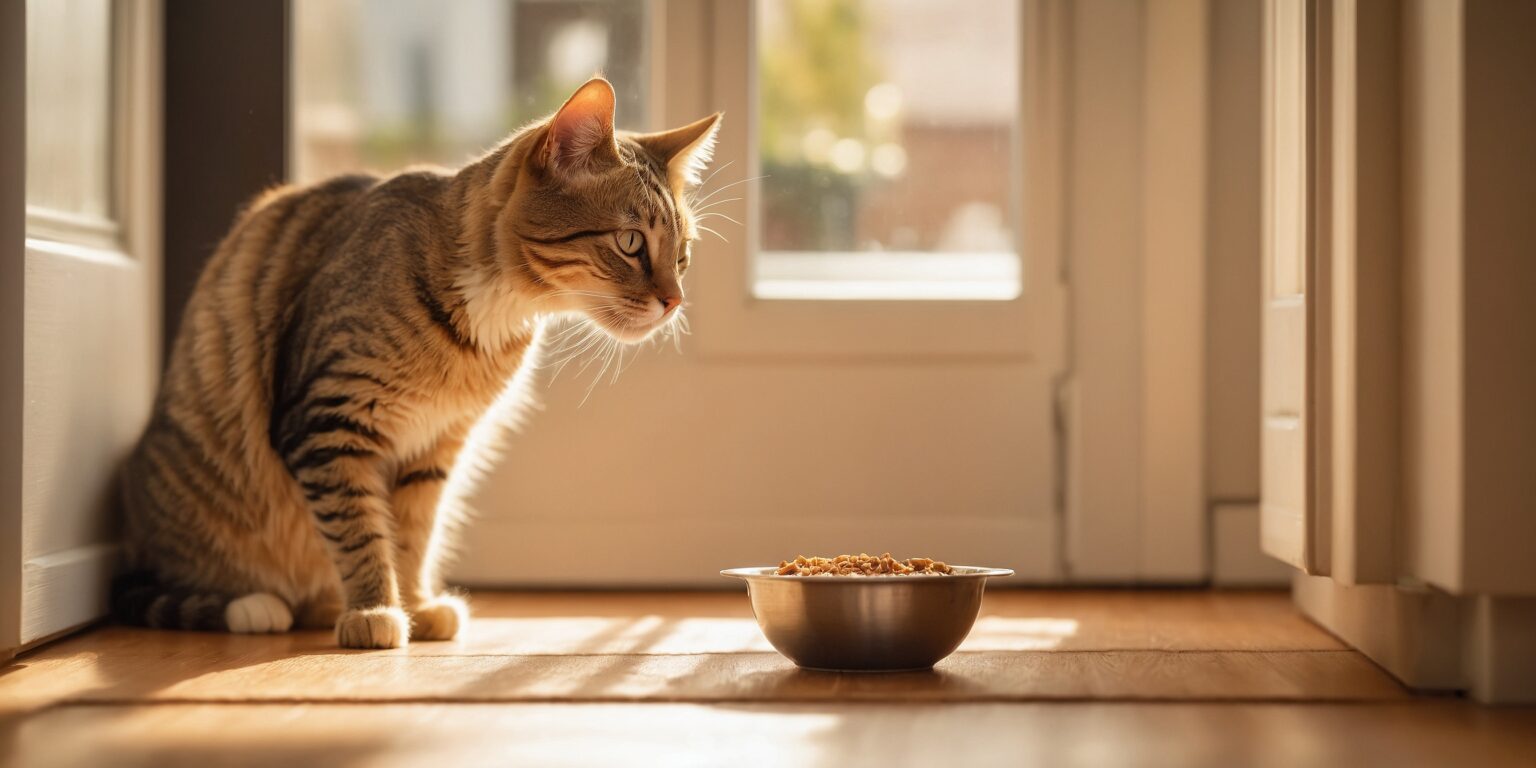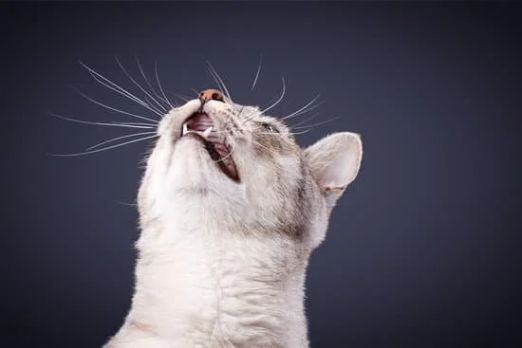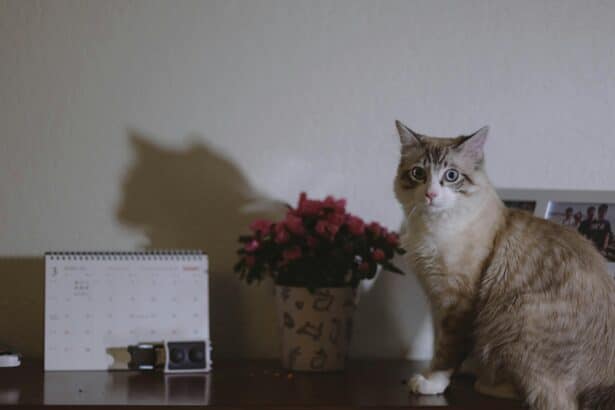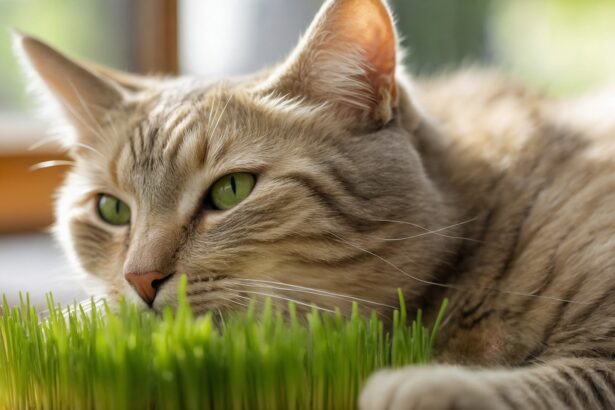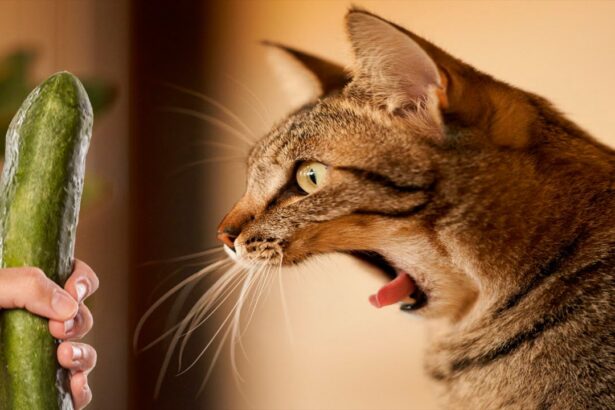Why regular meals matter for your cat
Cats are little carnivores with big energy needs, and their bodies prefer steady, frequent meals over long gaps. A regular feeding rhythm helps keep appetite steady and prevents trouble brewing under those whiskers. Think of it as your feline’s daily love language—served in a bowl.
- Stable routine: predictability lowers stress and supports a healthy appetite.
- Better digestion: smaller, regular meals are gentler on sensitive tummies.
- Risk control: consistent feeding helps reduce the risk of fat mobilization issues in at‑risk cats.
Not sure where to start with portions or timing? Here’s practical advice on feeding your cat that keeps things simple and safe.
Feeding needs by life stage
Kittens burn energy like tiny torpedoes: they need protein-rich food and several small meals daily. Adults usually do well with 2–3 structured meals, adjusted to activity and weight. Seniors often benefit from softer textures, warmer food, and extra moisture to support hydration and comfort.
- Kittens: frequent, high-protein meals to fuel growth.
- Adults: balanced protein, controlled calories, measured portions.
- Seniors: warm wet food, easy textures, and hydration boosters.
Curious about what belongs in the bowl? Explore what cats should really eat to match your feline’s needs.
How long can a cat go without eating?
As a rule, a healthy adult cat shouldn’t skip food for more than 24 hours. After 24–48 hours, concern rises—especially in overweight cats—because the liver may struggle with mobilized fat, leading to hepatic lipidosis, a serious condition. If your cat hasn’t eaten for a day, it’s time to call your vet and act early.
Surprising, isn’t it? Unlike dogs, cats rely on near-constant protein metabolism; they’re not built for extended fasting. In short, your little lion prefers regular nibbling over dramatic hunger strikes.
- Age: kittens and seniors are more fragile and need quicker intervention.
- Weight: overweight cats are at higher risk when skipping meals.
- Health: pain, dental issues, nausea, or infections can suppress appetite.
- Stress: moves, new pets, or routine changes can turn mealtime into “no-thanks time.”
Want the full picture on appetite loss and risks? Read why a cat that stops eating can be in danger and what to do next.
Common reasons cats stop eating
- Dental pain: gingivitis or broken teeth make chewing painful.
- Nausea: hairballs, gastritis, or meds can turn off appetite.
- Loss of smell: stuffy noses (like with colds) make food unappealing.
- Stress: new furniture, visitors, or even a different bowl can throw them off.
- Food switch: sudden changes in brand, texture, or flavor can cause refusals.
If your cat is skipping meals and bringing food back up, this guide to why cats vomit and what helps will save you guesswork.
What to do if your cat hasn’t eaten
Red flags and when to call the vet
- Immediately: kittens under 6 months, diabetic cats, or any cat with repeated vomiting, lethargy, or abdominal pain.
- Within 24 hours: any adult cat refusing all food.
- Anytime: drooling, bad mouth odor, sudden weight loss, or hiding—these deserve prompt attention.
Trust your gut: if your cat “just isn’t right,” call your vet. Early action keeps little issues little.
Gentle appetite-boosting tips at home
- Warm it up: microwave wet food for 5–10 seconds, stir well, and test—warmth boosts aroma.
- Flavor toppers: add a teaspoon of tuna water (no oil or salt), bone broth made for pets, or crushed freeze-dried treats.
- Try texture shifts: pâté vs. chunks can be a game-changer for picky tongues.
- Quiet dining: feed in a calm, familiar spot with a shallow, whisker-friendly bowl.
- Hand-offer small bites: a few licks from your finger can kickstart appetite, then move to the bowl.
- Play before dinner: 3–5 minutes of feather-toy fun can trigger hunger hormones.
Pro tip: make a “scent trail.” Smear a pea-sized dab of warmed food on a plate’s edge and lead tiny dots toward the main portion—many cats follow their noses right into a meal.
Big mistake to avoid
Don’t “wait it out” or use tough love. With cats, withholding food can backfire and risk hepatic lipidosis, especially in overweight felines. Avoid sudden diet switches, human meds, or force-feeding without veterinary guidance—these can make things worse.
If appetite dips happen often, a structured routine and the right food help. For long-term health and purr-filled years, see this guide on cat longevity and what supports it.
Conclusion
Regular, balanced meals are essential for your cat’s health and happiness. If your feline skips food for 24 hours, treat it as an early warning and act with gentle, practical steps—then call your vet.
Your cat doesn’t need food drama, just a caring routine, tasty aromas, and your reassuring presence. You’ve got this, whisker guardian.
FAQ
Is intermittent fasting safe for cats?
No. Cats aren’t designed for fasting; skipping meals can be dangerous, particularly for overweight or unwell cats. Keep a steady, vet-approved feeding routine.
How long can a kitten go without eating?
Not long at all. Kittens are fragile and need frequent meals; if a kitten refuses even one meal, contact your vet promptly.
What can I feed a cat that refuses dry food?
Try warmed wet food, different textures, or a tiny topper like tuna water. If refusal continues beyond 24 hours, seek veterinary advice.
Can stress make my cat stop eating after a move?
Yes. Changes in environment, smells, or routine can suppress appetite. Offer quiet feeding spots, familiar bowls, and calming routines—and call your vet if it lasts.


